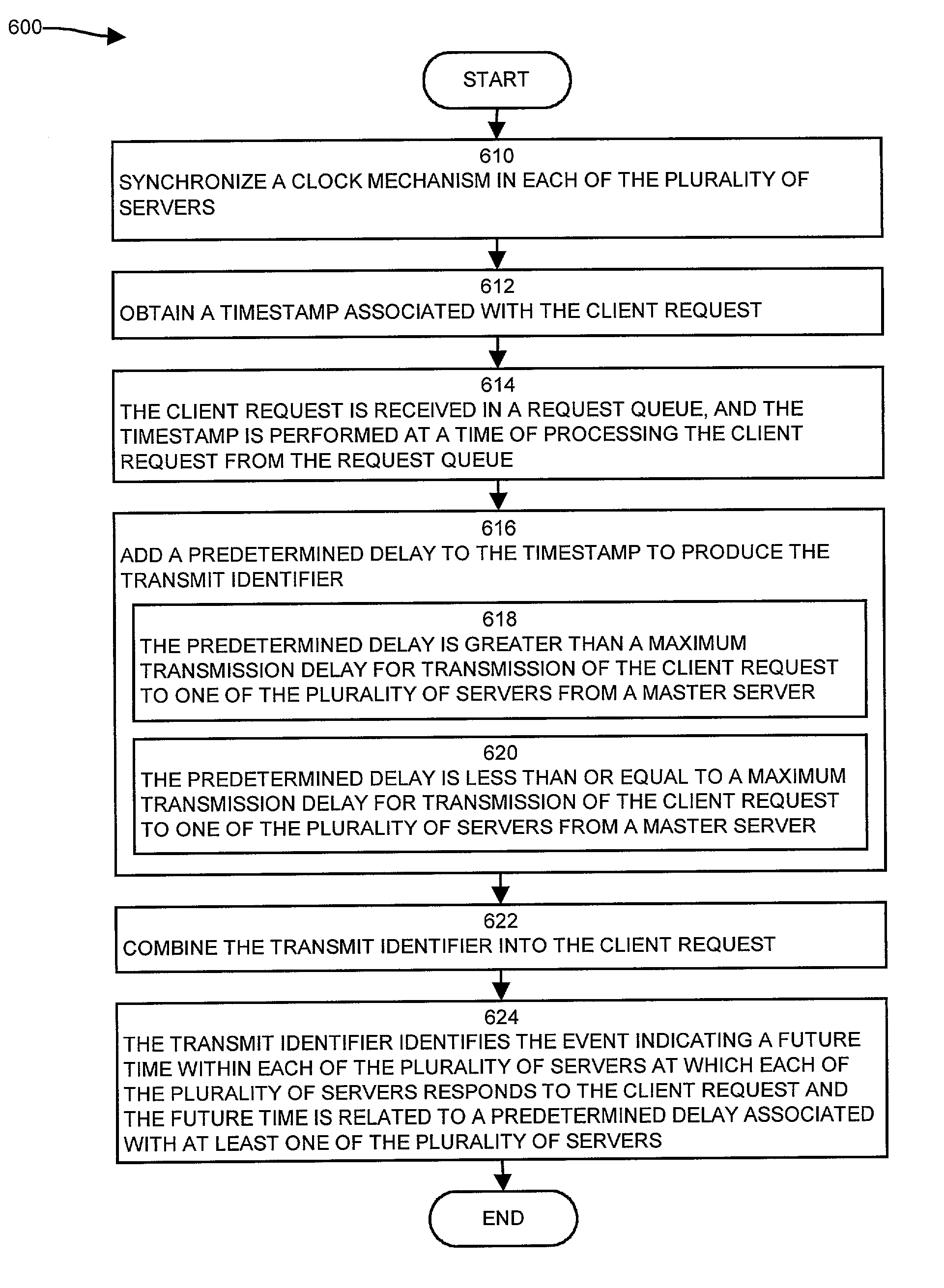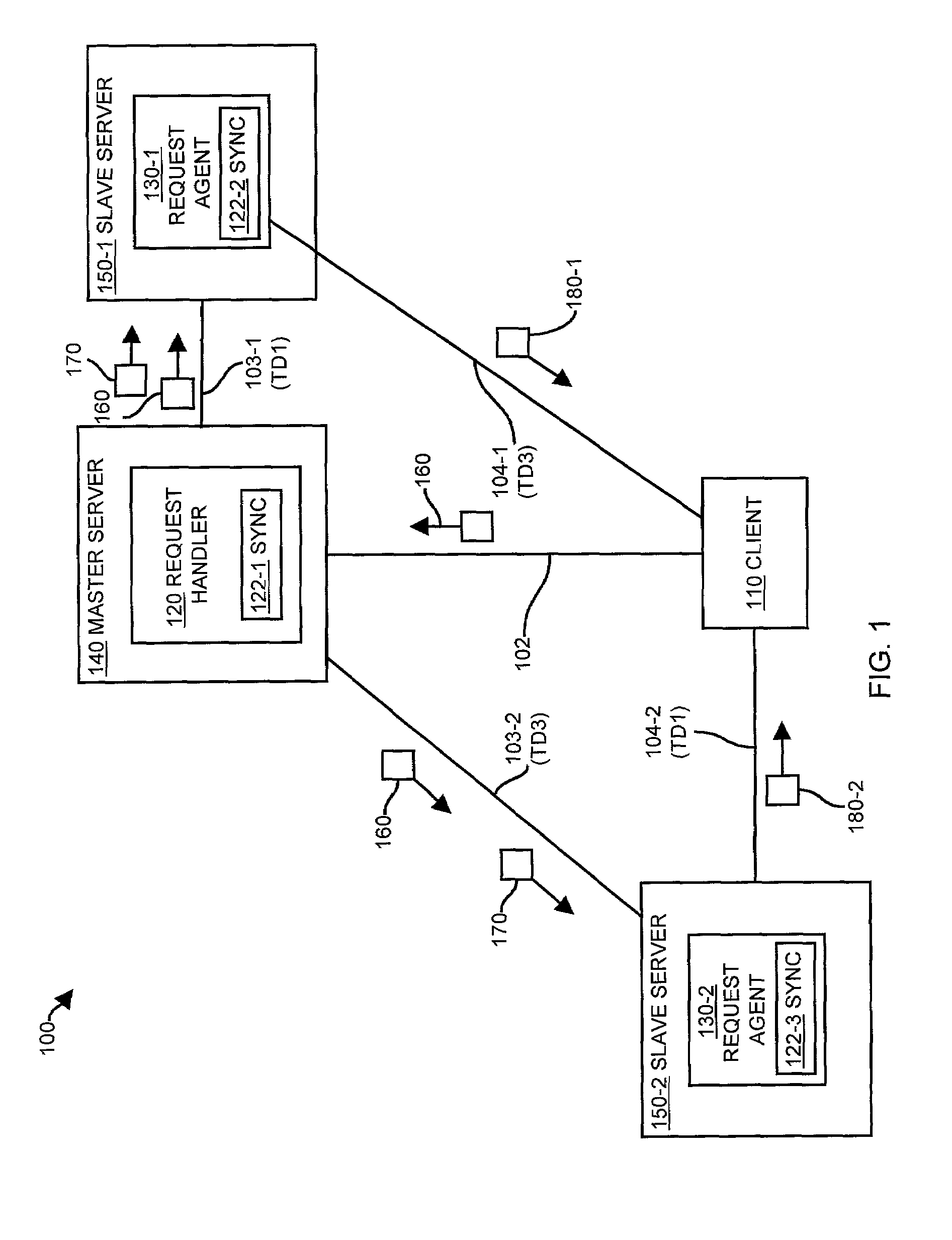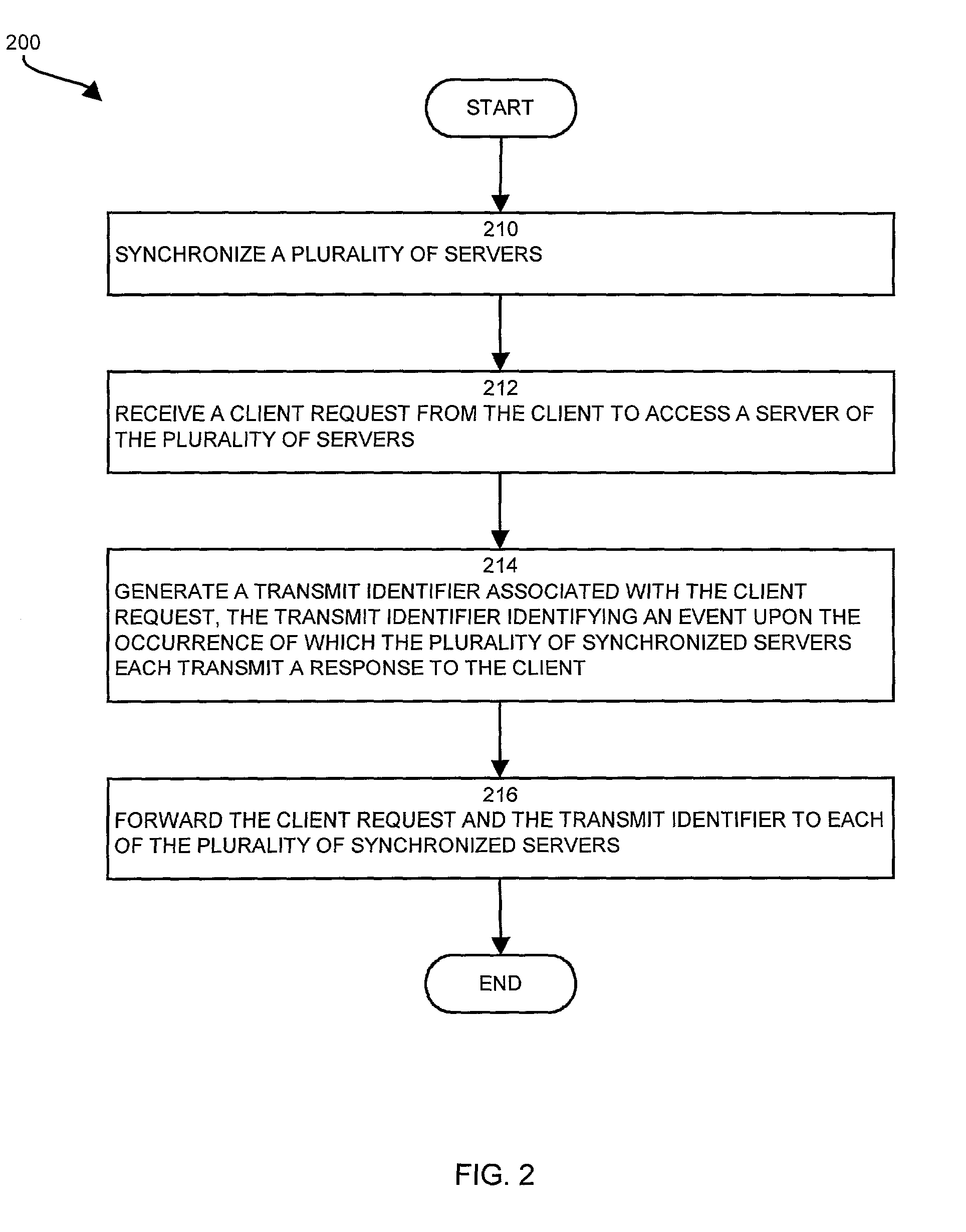Method and apparatus for handling requests in a network
a network and request technology, applied in the field of network request processing methods and apparatuses, can solve the problems of not ensuring that the request content is being responded to the fastest duplicate server, and the selection of the fastest duplicate server is not always accurate using conventional techniques
- Summary
- Abstract
- Description
- Claims
- Application Information
AI Technical Summary
Benefits of technology
Problems solved by technology
Method used
Image
Examples
Embodiment Construction
[0041]Embodiments of the invention are directed to methods and mechanisms that improve the accuracy of selecting an optimal slave server to respond to a client request for content. Upon receipt of a client request for content, a master server timestamps the arrival time of the client request for content. The timestamp serves as a basis for a transmit identifier that can be used later by one or more slave servers to know when to initiate delivery of a response to a client request for content to the requesting client.
[0042]In one embodiment of the invention, both the master server and slave servers are time synchronized using any one or more of a variety of methods such as a NTP (network time protocol configured to synchronize among the servers directly), GPS (global positioning system), clock times distributed by cell phone, television / radio signals, or other synchronization methods, etc. that tightly time-couple the master server and slave servers to each other.
[0043]The master serv...
PUM
 Login to View More
Login to View More Abstract
Description
Claims
Application Information
 Login to View More
Login to View More - R&D
- Intellectual Property
- Life Sciences
- Materials
- Tech Scout
- Unparalleled Data Quality
- Higher Quality Content
- 60% Fewer Hallucinations
Browse by: Latest US Patents, China's latest patents, Technical Efficacy Thesaurus, Application Domain, Technology Topic, Popular Technical Reports.
© 2025 PatSnap. All rights reserved.Legal|Privacy policy|Modern Slavery Act Transparency Statement|Sitemap|About US| Contact US: help@patsnap.com



